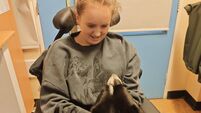Concern over under-reporting of elder abuse
The number of alleged cases of elder abuse reported to the HSE in 2009 is an increase of 30 on 2008 figures but, with estimated international prevalence rates of between 1% and 5%, it is feared that many cases go undetected.
This year the HSE is taking steps to increase public awareness and ensure that their database captures all cases referred and being dealt with by the authority. Latest figures show most cases are referred to the HSE by public health nurses.












